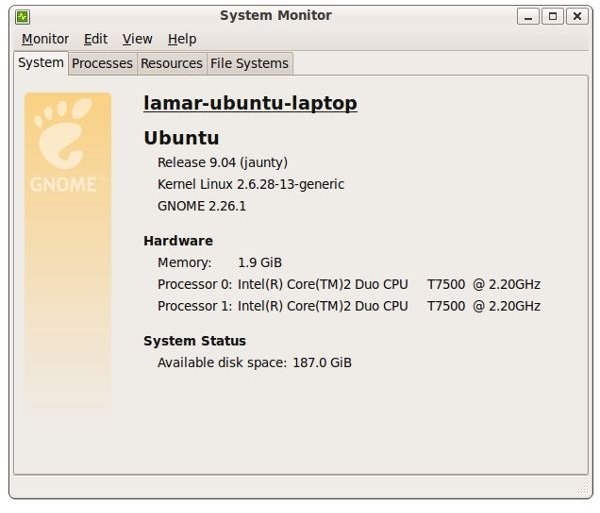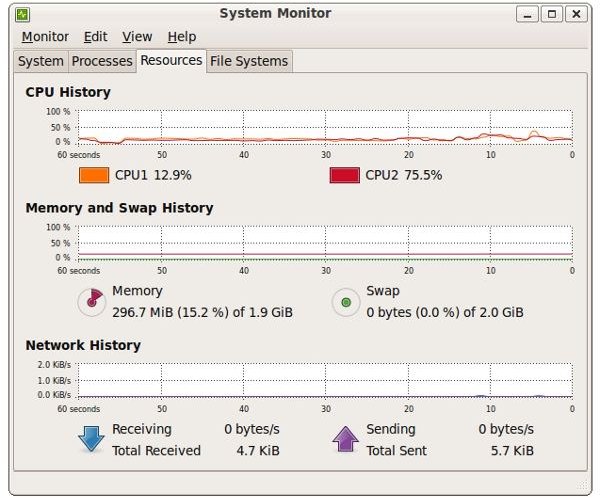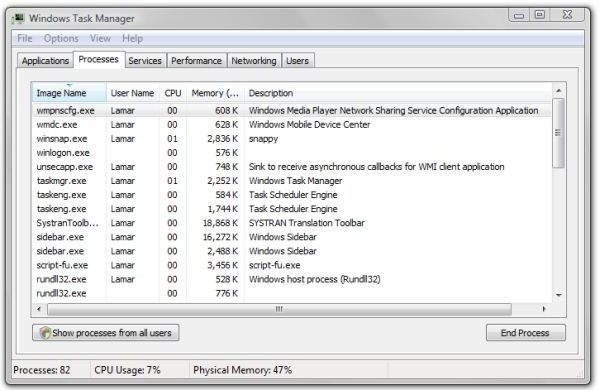Windows Equivalents - Using "Task Manager" in Ubuntu
Task Manager in Windows
In Windows, Task Manager is started by right-clicking the Taskbar or by pressing Ctrl-Alt-Delete. It shows in separate tabs the programs, processes, and services running on the PC. It is most often used to manually close an errant program that is not responding, but it can display performance parameters such as CPU activity and memory usage, networking activity, and view a list of users logged in on the PC. Under the Users tab, you can also send a message to another user, see what they are working on, or if you are the administrator, forcibly disconnect another user from the PC.
System Monitor in Ubuntu



The equivalent of Windows Task Manager in Ubuntu is System Monitor. It can be started by selecting System → Administration → System Monitor.
The “System” tab shows the computer’s network name, some release details, installed memory, CPU name and speed, and available disk space.
The “Processes” tab is similar to Windows Task Manager. It shows the process name, PID (or process ID), status, memory usage, and CPU utilization. Right-clicking a process name causes a dialog to pop up. In this dialog are
- Stop Process - Stop it right now. This is used when you want to pause a process, but will likely be restarting it.
- Continue Process - Continues where the process left off at if you stopped it.
- End Process - Shut down the process and allow it to finish normally.
- Kill Process - Makes the process shut down immediately.
The “Resources” tab graphically displays CPU activity, memory and swap, and network history.
The “File Systems” tab shows the partitions that are mounted and active.
Ctrl-Alt-Delete in Ubuntu
Ctrl-Alt-Delete in Ubuntu brings up the shutdown menu. You will most likely not want to change this because it’s more convenient to press this familiar key combination than it is to click the power icon at top right.
Needing to halt an errant or non-responsive program can happen in Linux, but it’s not as common as in Windows. When facing such an annoyance, particularly if the program is making the system unstable, you might not want to go traipsing off in the menus to start System Monitor. Fortunately, there’s a short-cut available.
It’s called “Force Quit.” To add it to the Ubuntu/Gnome panel, right-click the panel and select “Add to Panel.” Scroll down and find Force Quit and then click “Add.”
To use Force Quit, click the Force Quit icon in the panel and then click in the window or on the window frame of the application you want to force to stop.
